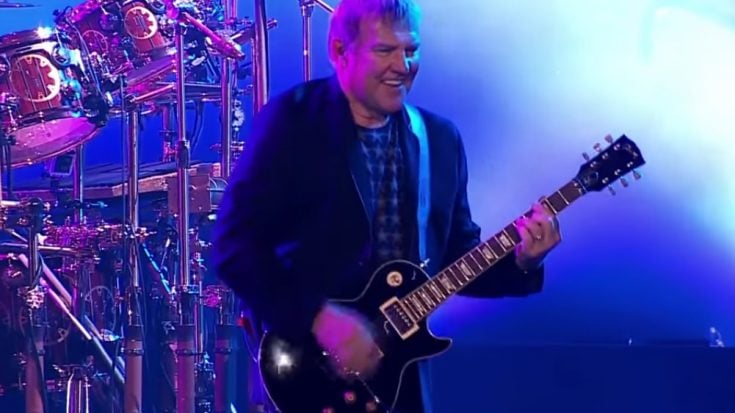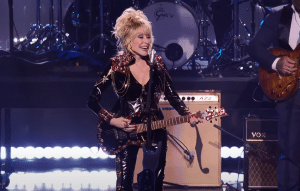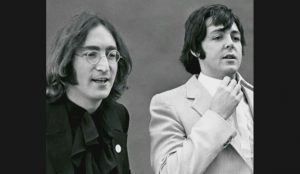Alex Lifeson Shares Deep About His Musical Influences

Alex Lifeson of Rush - ISRAEL HECHEM / Youtube
Aleksandar Živojinović, better known to the world as Alex Lifeson, wasn’t destined for a life of ordinary chords and predictable melodies. Toronto, the city that would become his musical crucible, provided a fertile ground for Lifeson’s burgeoning talent.
By 1968, fate intervened, bringing together Lifeson, bassist and vocalist Geddy Lee, and drummer John Rutsey. Lifeson’s distinctive sound, a potent blend of technical prowess, sonic experimentation, and raw emotion, became an integral part of Rush’s musical tapestry.
Today, Alex Lifeson stands tall amongst the pantheon of rock guitar gods. His influence can be heard in the music of countless contemporary musicians, a testament to the enduring power of his artistry. But beyond the accolades and awards, it is the depth of his connection with his listeners that truly defines his legacy.
In every soaring solo, and every heart-wrenching melody, Lifeson lays bare his soul, inviting us to share in the emotional journey that is his music. And it is in this vulnerability, this shared experience, that the true magic of Alex Lifeson lies.
The genius behind Andy Summers’ role in The Police
The Rush guitarist was the first guest of the new podcast series Shred With Shifty hosted by Foo Fighters guitarist Chris Shiflett, and he shared his influences while also helping his fellow guitarist learn the solo from the Canadian prog rockers’ 1981 hit “Limelight”.
When Shiflett asked Lifeson the “up-and-coming guitar players at that time” that was helping the latter shape his guitar style, two guitarists with different approaches were brought up.
“Well, I loved Andy Summers playing. Totally, it was quite unique, it was so chorus-y, but the chordal structure and the way he took up space in those songs, in those Police songs, Sting was a pretty pedestrian bass player. He wasn’t flashy or anything,” Lifeson illustrated.
Alex explained the genius behind the role of Summers in the three-piece new wave outfit. With Sting not taking up too much space as the frontline with his bass playing, the guitarist has a better chance to “create a broader palette” for The Police.
Allan Holdsworth’s impact on Lifeson’s guitar style
Lifeson also mentioned Allan Holdsworth, a British jazz guitarist. This prog rock guitarist has always been a major influence on Lifeson, as he claimed in some of his interviews.
“He was such a fantastic lyrical player. I mean, he played like a sax player, and I know he played sax as well, but all his phrasing was like that, and his use of the vibrato arm was what really got me into using a vibrato arm,” the Rush guitar maestro told Shiflett.
Holdsworth’s early desire to play the saxophone led him to develop his unique legato soloing style. Not having the money to buy one, he tried to mimic the flowing lines of notes on the guitar, hence the sax-like style.
Lifeson continued singing praises for the British guitarist, “So I thought, you know, I’d never heard it, it wasn’t a whammy bar, it was a vibrato worm, and he would gliss between notes and phrases, and in such a way, it was stunning to listen to.”
View this post on Instagram
How good and special “Limelight” is
Moving Pictures wasn’t your typical rock album, and neither was “Limelight”. Shiflett points out that Rush, with their complex structures and prog-rock leanings, stood out amongst the likes of Aerosmith, Black Sabbath, and KISS. They were practically avant-garde in comparison.
But, even Lifeson admits they weren’t perfect live. Their intricate music wasn’t always forgiving. “If you got lost, boy, it was hard to get back,” he laughs, remembering the occasional “trainwrecks” onstage.
But “Limelight” was special. Though memory fades (“That was 43 years ago”), Lifeson recalls using a modified Stratocaster with a vibrato arm for the solo. It took about five takes, which were then combined by Geddy and producer Terry Brown.
The goal? To capture the isolation and fragility of being in the spotlight. Lifeson wanted to make the solo echo that feeling of loneliness, and he nailed it. Soaring melodies and moments of vulnerability paint a perfect picture of the song’s theme.
Watch the snippet below of the episode below:












